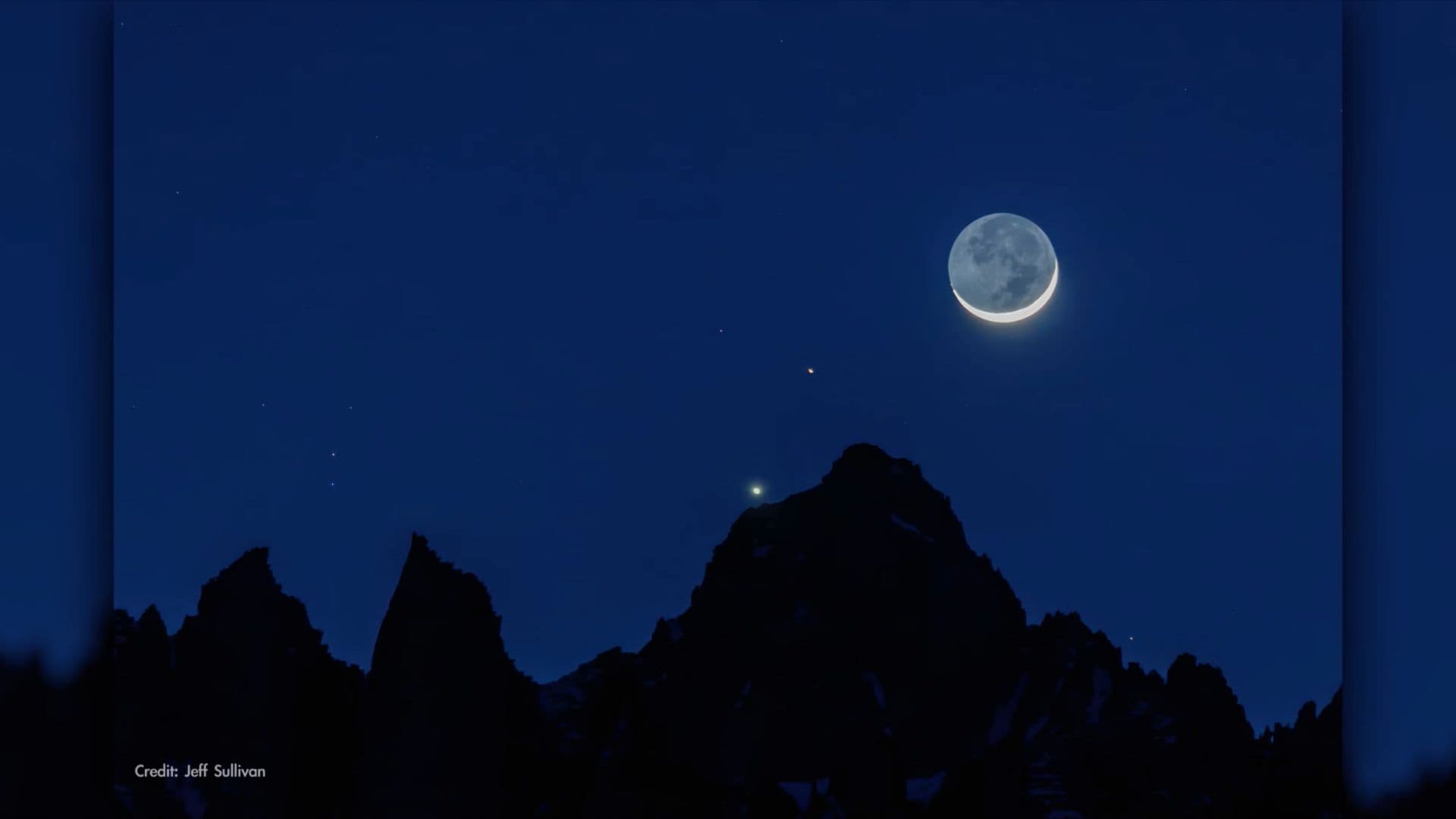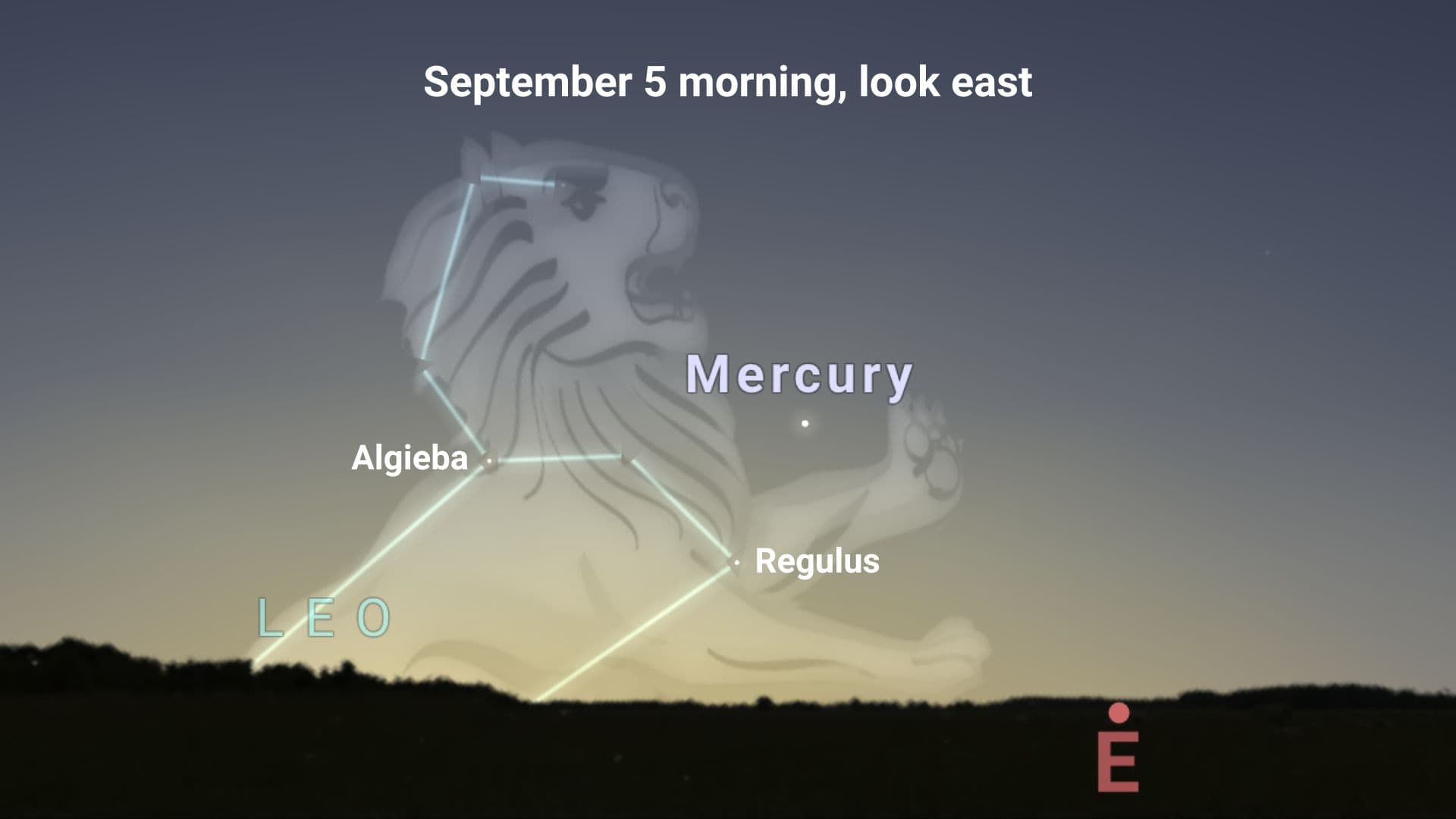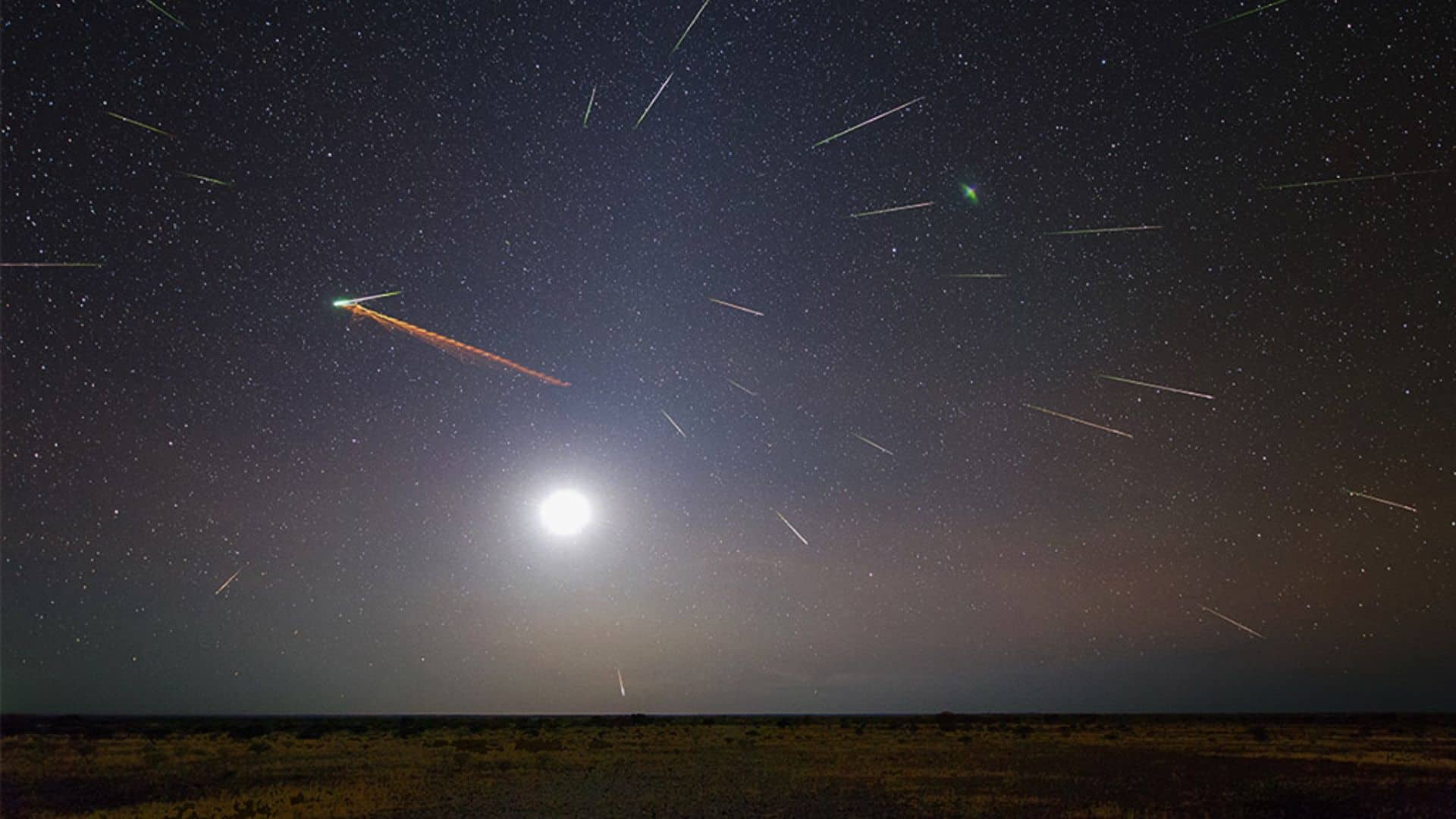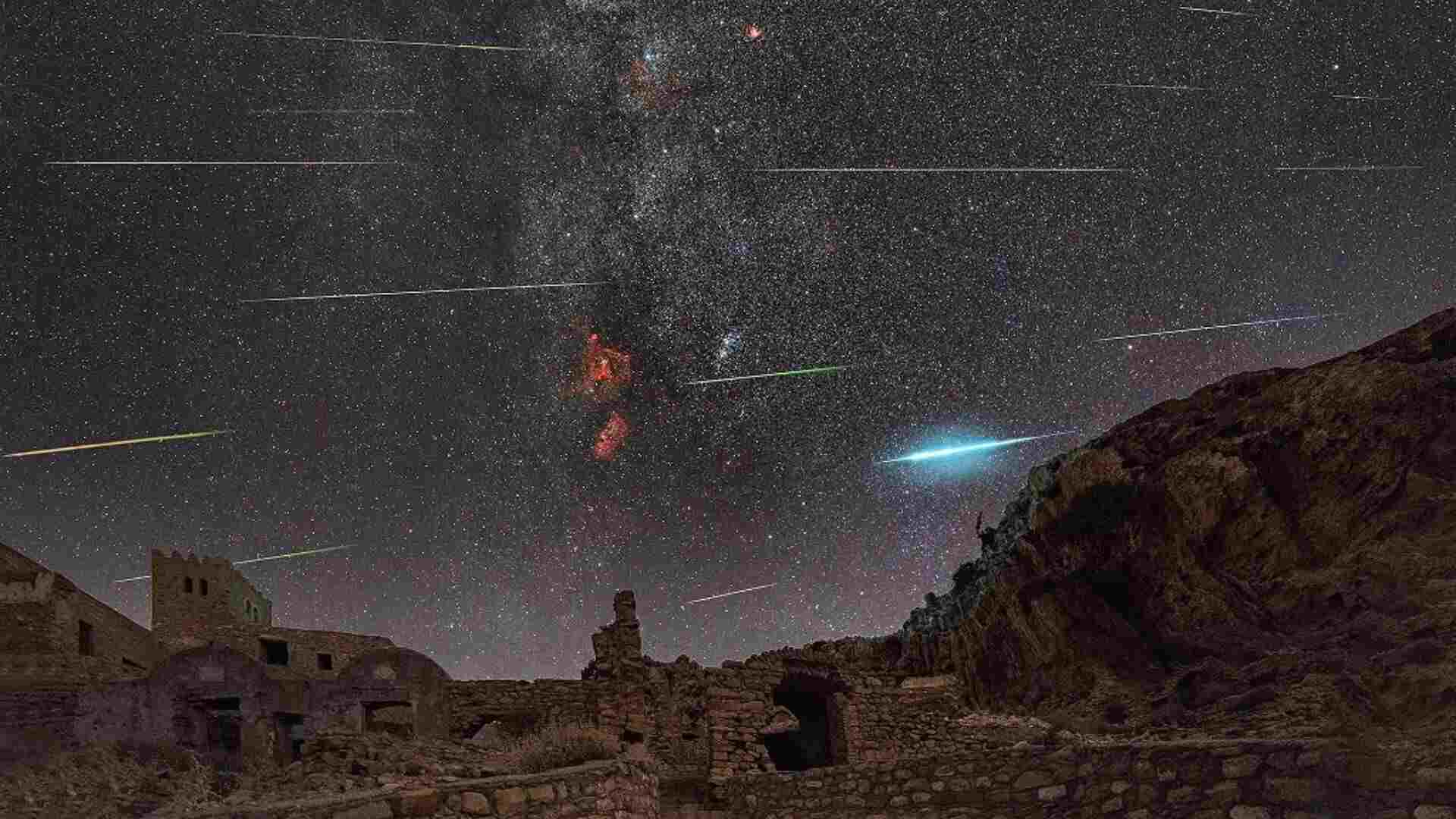Mercury at its greatest eastern elongation on July 22, 2024, marks the best time to observe Mercury in the western sky following sunset.
Mercury at greatest eastern elongation
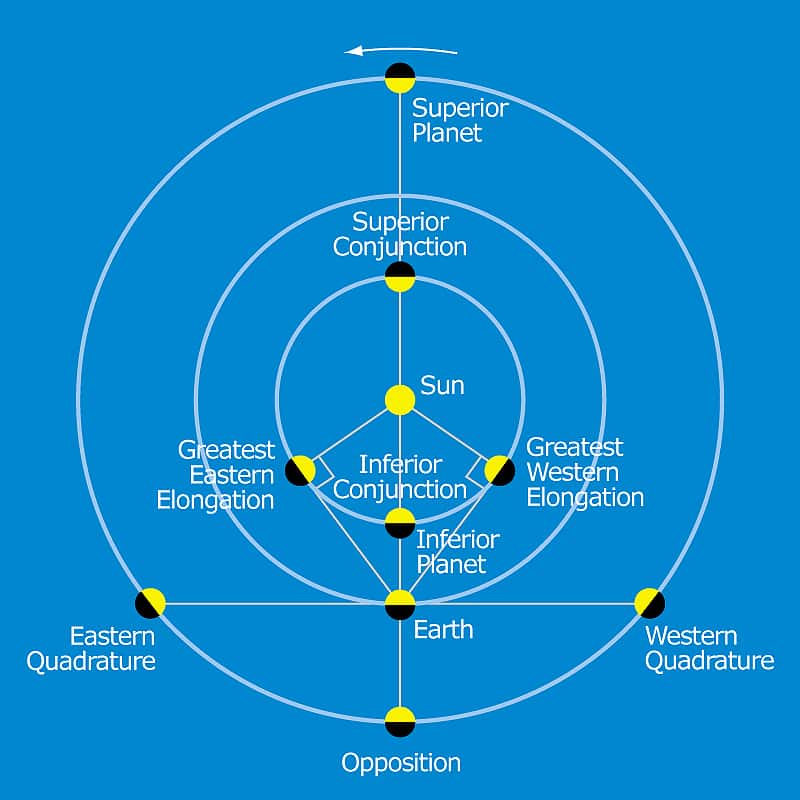
Orbit of the planet Mercury is closer to the sun than any other planet. That’s why Mercury is seen very close to the sun in the sky and lost in the sun’s glare for most of the year.
Mercury is only observable for a few weeks each time it reaches its maximum angular separation (called greatest elongation) from the sun. This angular separation is measured in degrees to the east or west of the sun.
When Mercury is as far east of the sun as possible, it is seen on the western horizon after sunset, as it rises after sunrise and sets after sunset. It is called the greatest eastern elongation of Mercury.
The maximum angular separation of mercury from the sun during the greatest elongation is about 28°. So you can’t see Mercury at zenith (overhead point) in the night sky.
So the greatest eastern elongation of Mercury refers to the best time to observe planet Mercury in the western sky just after sunset, as it’s farthest from the sun’s glare.
Please note that Mercury usually reaches its greatest eastern elongation a month after its superior conjunction position.
The opposite of greatest eastern elongation is called greatest western elongation when Mercury is seen in the eastern sky before sunrise.
The switching of Mercury from the western sky to the eastern sky (or vice versa) is seen approximately three times a year, as both the greatest eastern elongation and the greatest western elongation happen on average once every 116 days.
Next greatest eastern elongation of Mercury in 2024
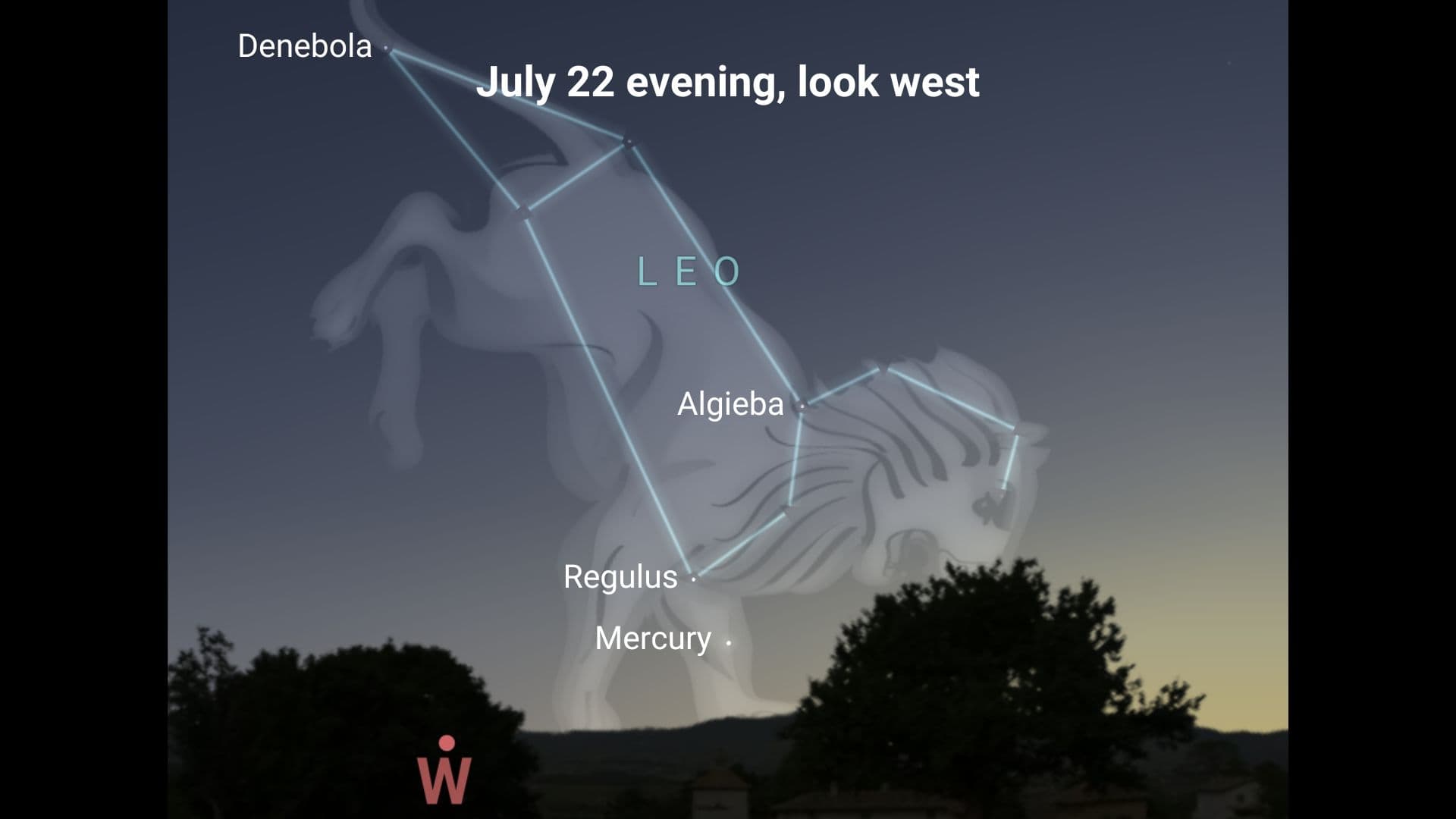
Planet Mercury will reach its next greatest eastern elongation on July 22, 2024 at 07:00 UTC (or 3 a.m. EDT).
When to watch: Watch planet Mercury around 30 minutes after sunset on July 22, 2024.
Where to look: Look in the western sky near the horizon (along the sunset direction).
Brightness: On the evening of July 22, 2024, planet Mercury will shine with +0.6 magnitude.
Phase: On the evening of July 22, 2024, planet Mercury will be 44% illuminated (crescent phase). However, you need a telescope to see the phases of Mercury.
Upcoming dates of the greatest eastern elongation of Mercury
| Date | Time (UTC) |
|---|---|
| March 24, 2024 | 22:00 |
| July 22, 2024 | 07:00 |
| November 16, 2024 | 08:00 |
| March 08, 2025 | 06:00 |
Mercury events in 2024
| Date | Events | Remarks |
|---|---|---|
| January 12, 2024 | Mercury at greatest western elongation | Best time to watch Mercury in the eastern sky before sunrise |
| February 28, 2024 | Mercury at superior conjunction | Transition of Mercury from a morning object to an evening object |
| March 24, 2024 | Mercury at greatest eastern elongation | Best time to watch Mercury in the western sky following sunset |
| April 11, 2024 | Mercury at inferior conjunction | Transition of Mercury from an evening object to a morning object |
| May 9, 2024 | Mercury at greatest western elongation | Best time to watch Mercury in the eastern sky before sunrise |
| June 14, 2024 | Mercury at superior conjunction | Transition of Mercury from a morning object to an evening object |
| July 22, 2024 | Mercury at greatest eastern elongation | Best time to watch Mercury in the western sky following sunset |
| August 19, 2024 | Mercury at inferior conjunction | Transition of Mercury from an evening object to a morning object |
| September 5, 2024 | Mercury at greatest western elongation | Best time to watch Mercury in the eastern sky before sunrise |
| September 30, 2024 | Mercury at superior conjunction | Transition of Mercury from a morning object to an evening object |
| November 16, 2024 | Mercury at greatest eastern elongation | Best time to watch Mercury in the western sky following sunset |
| December 06, 2024 | Mercury at inferior conjunction | Transition of Mercury from an evening object to a morning object |
| December 25, 2024 | Mercury at greatest western elongation | Best time to watch Mercury in the eastern sky before sunrise |
Read about all Mercury events: Mercury at inferior conjunction Mercury at greatest western elongation Mercury at superior conjunction Mercury at greatest eastern elongation
Please follow us on Facebook and Twitter to get latest space news, upcoming skywatching events and astronomy-related content.
